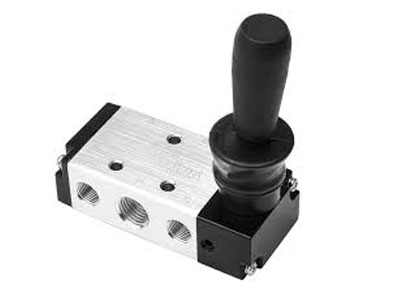Key Takeaway
Pressure relief valves (PRVs) are used to protect systems from overpressure conditions, ensuring safety and preventing equipment damage. They provide reliable pressure relief by opening at a predetermined set pressure, allowing excess pressure to escape and reducing the risk of system failure.
PRVs are essential components in various industries, providing safety and compliance with industry standards. Their ability to maintain pressure within safe limits makes them critical for ensuring the safe operation of equipment and systems.
Benefits of Using Pressure Relief Valves
Pressure relief valves provide essential protection against overpressure conditions, safeguarding equipment and personnel. They automatically release excess pressure, preventing potential damage or catastrophic failure.
These valves enhance system reliability by maintaining pressure within safe limits, reducing the risk of operational disruptions. Their ability to provide immediate pressure relief ensures continuous system operation and safety.
In addition to safety, pressure relief valves contribute to cost savings by minimizing equipment wear and tear. Their use reduces maintenance needs and extends the lifespan of pressure-sensitive components.

Ensuring Safety in Systems
Pressure Relief Valves (PRVs) are vital components in safeguarding industrial systems from the dangers of overpressure. Overpressure can cause significant damage to equipment, pipelines, or even result in catastrophic failure if left unchecked. PRVs are designed to automatically release pressure when it exceeds a predefined set point, restoring the system to a safe operating pressure. The key role of a PRV is to act as a fail-safe mechanism, ensuring that systems continue to operate within their specified limits.
The first layer of safety provided by PRVs is pressure regulation. As the system reaches dangerous pressure levels, the PRV opens and releases excess fluid or gas, thereby preventing pressure from rising to a point where it could rupture pipes, damage machinery, or pose a risk to operators. PRVs are commonly used in boilers, chemical reactors, and oil and gas pipelines, where pressure fluctuations can be a frequent occurrence due to temperature variations, changes in flow, or sudden system shutdowns. Without PRVs, such systems could easily experience damage that could be costly or even hazardous.
Additionally, proper installation and maintenance are essential in ensuring that PRVs function correctly. Regular inspection and testing should be part of a comprehensive safety plan to make sure that PRVs respond when needed. This includes checking for leakages, worn-out seals, and proper spring tension. It’s also important to ensure that the valve’s set pressure is accurately calibrated for the specific application.
You May Like to Read
Applications Across Industries
Pressure Relief Valves (PRVs) play an essential role in protecting a wide variety of industrial systems across multiple sectors. Their primary purpose is to safeguard equipment from overpressure situations, which can lead to catastrophic failures, safety hazards, and significant financial losses. PRVs are used in various industries such as oil and gas, power generation, chemical processing, water treatment, and manufacturing, each with specific requirements depending on the nature of the system.
In the oil and gas industry, PRVs are commonly used to protect pipelines, pressure vessels, and other critical equipment. Given the high pressures involved in these operations, PRVs prevent potential blowouts or explosions by venting excess pressure safely. In power plants, PRVs are used to protect boilers and steam systems, ensuring that the pressure stays within safe operating limits. Overpressurized steam can cause severe damage to equipment or lead to accidents, so maintaining proper pressure levels is crucial.
The chemical processing industry also heavily relies on PRVs to manage high-pressure reactors, distillation columns, and storage tanks. Any pressure deviation from the designed limit in these processes can result in the release of hazardous chemicals, posing a significant risk to workers and the environment. Additionally, water treatment plants use PRVs to regulate pressure in pipes and filtration systems to prevent bursting or leaks. In manufacturing, PRVs are installed in pneumatic and hydraulic systems to protect against sudden pressure surges that can damage machinery or disrupt production.
Cost-Effectiveness of PRVs
The cost-effectiveness of Pressure Relief Valves (PRVs) can be evaluated from the perspective of their ability to prevent expensive equipment damage and costly downtime. While PRVs may require an upfront investment, they are an essential component for preventing catastrophic failures in high-pressure systems. By maintaining a safe and stable system pressure, PRVs reduce the likelihood of costly repairs and replacements.
In industries such as oil and gas, chemical processing, and power generation, the cost of replacing damaged equipment due to overpressure can be significant. Therefore, the use of PRVs is a long-term cost-saving solution that ensures system reliability and reduces maintenance expenses.
Additionally, PRVs help extend the lifespan of equipment by preventing damage from overpressure. This makes them a wise investment for industries that require continuous and safe operation of their systems, balancing initial costs with long-term savings.
Common Challenges and Solutions
Common challenges with PRVs include improper sizing, which can lead to underperformance or frequent failures. Sizing issues can be resolved by consulting system requirements and choosing a PRV designed to handle specific pressure ranges and flow rates.
Another challenge is regular maintenance and inspection. Without proper care, PRVs can become stuck or corroded, affecting their reliability. Implementing a routine maintenance schedule and using high-quality materials can significantly mitigate this issue.
Operational challenges like chattering (rapid opening and closing) can also occur. This can often be addressed by adjusting the system’s set pressure or ensuring the PRV is installed in the correct position for optimal functionality.
Conclusion
Pressure relief valves (PRVs) are used to protect systems from overpressure conditions, ensuring safety and preventing equipment damage. They provide reliable pressure relief by opening at a predetermined set pressure.
Understanding the importance of PRVs is essential for selecting the right valve for specific applications, ensuring system safety and reliability. Their ability to maintain pressure within safe limits makes them critical components in pressure management systems.
